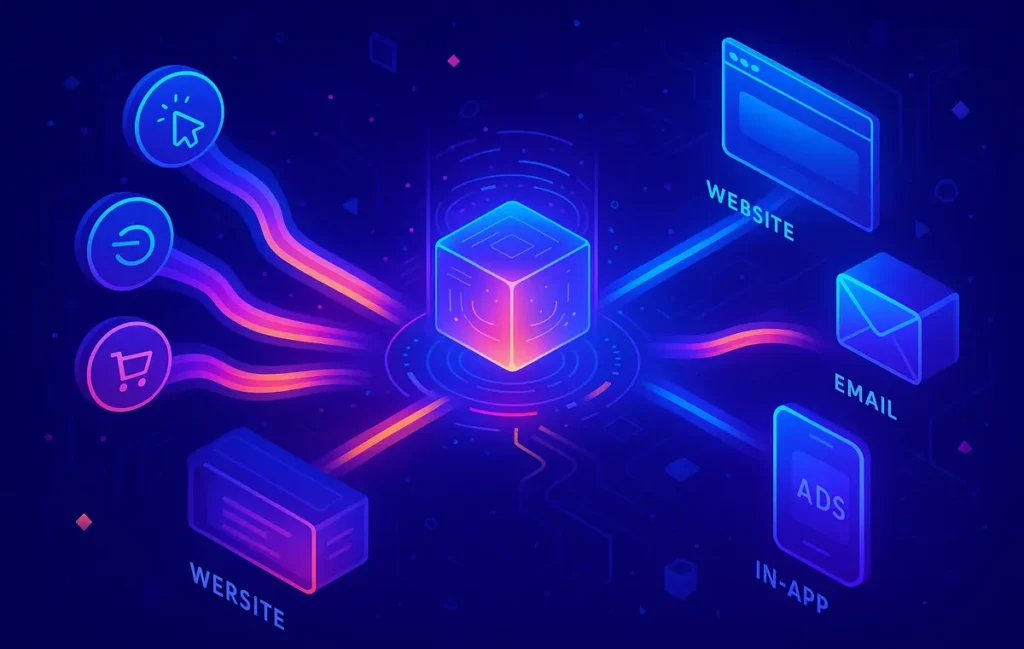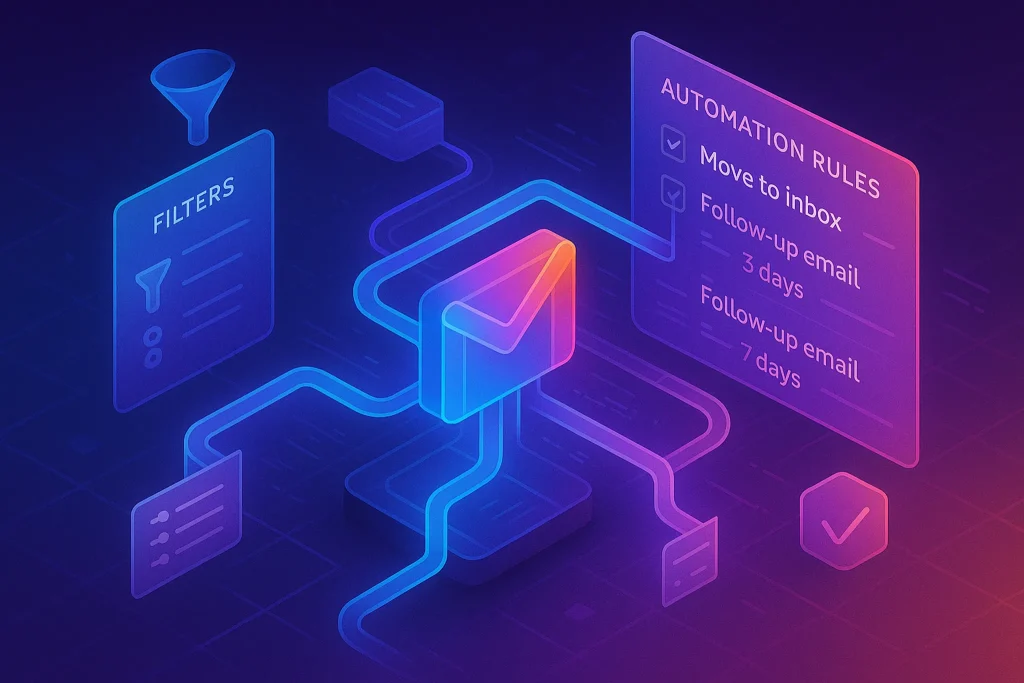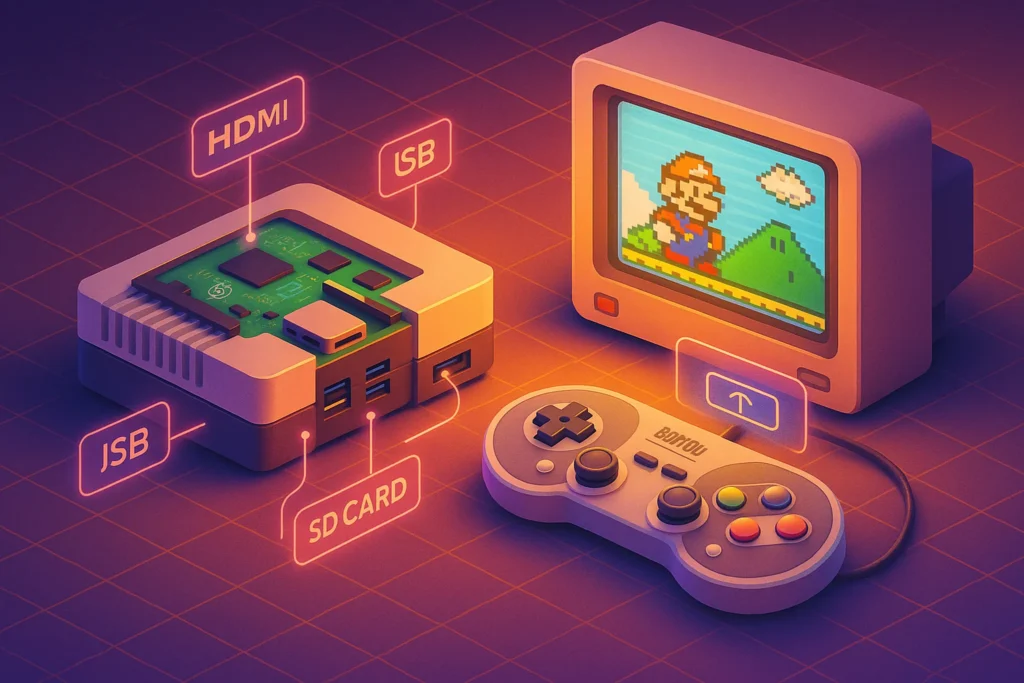🎯 Intro
Most marketers think they are doing personalization when they insert a first name into an email subject line. But customers are not fooled. In 2025, relevance comes from what users actually do, not what you call them. If someone browses a product twice, scrolls deep into a blog post, or abandons a cart, those micro-behaviors reveal intent far more clearly than a static profile.
This guide will show you how to take raw behavioral data and translate it into real personalization that drives click-through rates, conversions, and retention. And the best part? You can start with lightweight tools—Google Tag Manager, GA4, and a simple ESP—without a full engineering team.
💡 Nerd Tip: Think of personalization not as “what I know about a user,” but as “what the user is telling me through actions right now.”
🔍 What & Who
So, what exactly is behavioral data? It is the stream of digital footprints users leave: viewing a product, clicking a button, scrolling, playing a video, or spending extra dwell time on a topic. These actions are called events, and when combined with properties (like device, referral source, or category interest), they form a behavioral fingerprint.
We must also distinguish between session data (what happens in a single visit) and user data (the cumulative picture across visits). Identity stitching—using login, email, or client ID—helps unify these signals.
This guide is designed for solopreneurs, SMB marketers, and lean agencies who need results but cannot afford a complex data engineering pipeline. If you fall into that category, you’ll find a clear, event-first path forward.
⏳ Why It Matters Now (2025)
The sunset of third-party cookies has made zero-party and first-party data the lifeblood of marketing. No more buying audiences from opaque brokers; you must build relevance from your own interactions.
Behavioral data is at the center of this shift. Unlike demographic data, which changes slowly, behavior is dynamic. It reflects intent in the moment, which means your personalization can adapt in real time.
Why is this critical? Because KPIs like CTR, Average Order Value (AOV), Lifetime Value (LTV), churn, and ROAS all move when personalization is aligned with actual user intent. According to an Econsultancy study, brands using event-triggered personalization saw up to 20% higher conversion rates compared to static campaigns.
💡 Nerd Tip: If you’re debating where to start, always connect your first experiment to a direct KPI—like reducing cart abandonment—so the ROI is visible quickly.
🗂️ Data Design: A Schema You Can Actually Use
A successful personalization engine starts with schema design. Many marketers collect endless data but lack a structured taxonomy. That leads to chaos and unusable reports.
Here’s a practical event taxonomy you can adopt:
-
view_category (when a user browses a category or tag)
-
view_product | view_post (specific product or content viewed)
-
scroll_depth (how far they scrolled)
-
video_play
-
search (with query string)
-
add_to_cart | start_checkout | purchase | signup
-
like | bookmark
-
topic_interest (based on consumed content clusters)
On top of events, capture user properties such as:
-
Recency, frequency, monetary value (RFM)
-
Device type
-
Referral source
-
Content topic affinity
A lightweight identity resolution approach—matching email/phone/login to client_id—gives you a unified profile across sessions. This avoids fragmented data and keeps personalization consistent.
💡 Nerd Tip: Do not over-engineer schema. Start with 8–10 core events that map directly to your funnel stages. Add more only when you see gaps.
🛠️ Collection: A No-Code Stack
Good personalization does not require custom pipelines. A no-code stack can do the job.
Start with Google Tag Manager (GTM) and GA4 to collect events. Set up a clean DataLayer with standardized parameters so every event has context. Push these to GA4 for analytics.
From there, connect GA4 or GTM to destinations like Google Sheets, BigQuery, Segment, or RudderStack. These act as your mini-CDP, sending data into activation tools.
Don’t forget consent management. A CMP can control whether tags fire, ensuring GDPR/CCPA compliance. Behavioral data must be collected with user permission.
If you’re curious how to enrich personalization with APIs, check out guides like Marketing API Integrators which explain how to connect behavioral data to ad platforms without heavy lifting.
📊 Segmentation That Moves Revenue
Collecting data is meaningless unless you segment it. But here’s the catch: segmentation must be actionable, not just “nice to have.”
A simple RFM light model can segment users into High-Value, At-Risk, and New cohorts. For example, anyone who purchased twice in the last 30 days is High-Value, while those inactive for 60+ days are At-Risk.
You can also build interest cohorts based on the content or categories consumed. Someone reading multiple AI tool reviews clearly belongs in your AI-focused cohort. NerdChips uses this strategy to surface deeper guides like AI-Powered Personalization Tips to readers showing repeat AI interest.
An engagement score—combining recency, dwell time, and frequency—helps distinguish between casual visitors and power users.
Even without machine learning, rule-based propensity models (like “if view_product + add_to_cart without purchase in 24h → high purchase intent”) can drive significant results.
💡 Nerd Tip: Simplicity wins. A segmentation rule you can explain in one sentence is better than a black-box model that no one trusts.
🚀 Activation Playbooks (On-Site, Email, Ads, In-App)
Now comes the exciting part: turning data into personalized actions.
-
On-Site: Show dynamic hero banners or recommended products based on the last viewed category. If someone scrolled 70% through a blog on email automation, surface your Best Email Personalization Tools for E-Commerce guide.
-
Email: Trigger browse-abandon or category-interest drip series. Use send-time optimization rules to match when users are most engaged.
-
Ads: Build warm retargeting audiences from event data, such as “viewed product but not purchased.” This narrows spend to high-intent segments.
-
In-App or Portal: If you run SaaS, deliver contextual nudges. For instance, if a user uploads their first file but doesn’t invite teammates, trigger an “Invite Your Team” prompt.
💡 Nerd Tip: The goal is not to flood users with more messages, but to send fewer, smarter messages that match context.
🛠️ Step-by-Step Implementation
-
Define your KPIs and user journey—map awareness → consideration → conversion → retention.
-
Design your schema—create a clear event naming table, even in a simple spreadsheet.
-
Implement events in GTM/GA4—configure triggers, tags, and variables.
-
Connect to activation tools—whether ESP, onsite personalization, or ads.
-
Build your segments—RFM, interest, and engagement models.
-
Create triggers and copy templates—e.g., “If add_to_cart without purchase → send reminder within 24h.”
-
Test with A/B or holdouts—track incrementality, not just open rates.
-
Optimize continuously—introduce frequency caps and fatigue rules to avoid over-messaging.
💡 Nerd Tip: Document every event and trigger in a simple “Playbook.” This helps your future self—or a new team member—scale personalization without confusion.
⚠️ Challenges & Fixes
-
Data Quality: Duplicate or missing events can destroy trust. Always run QA with test profiles.
-
Latency: If it takes 24h for a trigger to fire, the moment is gone. Favor near-real-time integrations.
-
Compliance: With regulations tightening, CMPs are not optional. Respect data retention rules and give users easy opt-outs.
For deeper understanding of privacy-safe design, read guides like Consent Management Platforms, which explain how to keep personalization compliant without killing creativity.
⚡ Ready to Build Smarter Workflows?
Explore AI workflow builders like HARPA AI, Zapier AI, and n8n plugins. Start automating in minutes—no coding, just creativity.
📌 Real-Life Mini Case Study
To make this actionable, let’s look at how a small e-commerce store turned simple behavioral data into tangible results.
A boutique selling eco-friendly shoes had flat email performance—open rates at 14% and click rates below 2%. Instead of blasting all customers, they set up a behavioral event: scroll depth + dwell time ≥ 60s on the “sustainable sneakers” category. Anyone who crossed this threshold was tagged with a “High-Interest: Eco Sneaker” property.
The store then created two activations:
-
Dynamic homepage hero that greeted them with “Welcome back—eco sneakers restocked!”
-
Triggered email sequence offering eco-shoe care tips plus a 10% discount.
In three weeks, CTR climbed to 18%, and conversions on eco sneakers rose by 22%. The entire setup was built with GA4, GTM, and a simple ESP—no engineering team involved.
💡 Nerd Tip: Even one well-chosen event (like scroll depth + dwell time) can uncover intent stronger than demographic targeting.
📌 Comparison Snapshot: Old vs New Personalization
Here’s how traditional personalization differs from a behavioral-first approach:
| Approach | Static Personalization | Behavioral-First Personalization |
|---|---|---|
| Data Basis | Profile info (name, location) | Real-time events (clicks, scrolls, purchases) |
| Trigger | Batch campaigns on schedule | User action triggers in real time |
| Message Type | “Hi John, here’s our newsletter” | “Since you explored eco sneakers, here’s a restock alert” |
| Relevance | Low to medium | High—based on demonstrated interest |
| Impact | Minimal lift on CTR | Significant lift on CTR, conversion, LTV |
💡 Nerd Tip: Use this table in your internal docs to explain to stakeholders why “Hi {FirstName}” is not real personalization.
📌 Data-to-Trigger Mapping Template
To move from concept to execution, here’s a lightweight playbook mapping.
| Event Captured | Segment Created | Trigger | Example Activation |
|---|---|---|---|
| add_to_cart (no purchase in 24h) | Abandoned Cart | Email trigger | “Still deciding? Here’s 10% off to complete your order.” |
| scroll_depth ≥ 75% on AI tools guide | Content Engager | On-site block | Surface AI-Powered Personalization Tips as a recommended read |
| video_play (30s+) | Video Engaged | Ad retargeting | Show them related product video ads |
| repeat purchase ≥ 3x in 90d | VIP Segment | Email series | Early access or loyalty perks |
| inactive 60+ days | At-Risk User | Win-back campaign | “We miss you—here’s what’s new since your last visit.” |
This mapping helps translate raw behavioral data into clear actions any SMB can run with.
📌 Benchmarks & Numbers
Numbers make the case for behavioral-first personalization:
-
Triggered emails based on behavior drive 3–4x higher click-through rates than batch campaigns (Litmus 2024).
-
Companies implementing real-time triggers see up to 20% reduction in churn compared to those with static personalization.
-
An Accenture survey found that 91% of consumers are more likely to shop with brands that provide relevant recommendations tied to their behavior.
-
SMBs using interest cohorts in content personalization reported 15–25% lift in time-on-site, directly impacting ad revenue.
💡 Nerd Tip: Use benchmarks not just to convince stakeholders, but also as targets for your own experiments. If you’re below industry averages, you know where to focus.
📌 Future-Proof Angle (2026 and Beyond)
Why invest now? Because personalization in 2026 will not be optional—it will be table stakes.
As generative AI integrates with marketing stacks, tools will be able to interpret behavioral signals in real time and automatically generate dynamic copy or creative. Imagine an AI assistant that sees a user scroll halfway through a guide on marketing APIs and instantly serves them a tailored CTA offering your own Marketing API Integrators playbook.
APIs from platforms like Google and Meta are also leaning toward privacy-preserving real-time personalization, which means you’ll be able to use your zero/first-party data safely while still activating instantly.
For SMBs, this is a massive opportunity: with the right schema and triggers today, you’ll be able to plug into AI-native personalization engines tomorrow—without redoing your foundation.
💡 Nerd Tip: Treat your schema design like building the foundation of a house. Tools will change, AI will evolve, but if your events and properties are solid, your personalization will scale seamlessly into the future.
Want More Smart AI Tips Like This?
Join our free newsletter and get weekly insights on AI tools, no-code apps, and future tech—delivered straight to your inbox. No fluff. Just high-quality content for creators, founders, and future builders.
100% privacy. No noise. Just value-packed content tips from NerdChips.
🧠 Nerd Verdict
Effective personalization doesn’t begin with fancy tools. It begins with listening—through events. Once you define behaviors that matter, even the simplest stack can deliver powerful results. Start with one or two meaningful triggers, measure their lift, and only then expand into multi-channel orchestration. Behavioral-first personalization scales because it is rooted in truth: what the user actually does.
❓ FAQ: Nerds Ask, We Answer
💬 Would You Bite?
If you had to pick just one trigger to personalize today, which behavior would move revenue fastest for your business?
Crafted by NerdChips for creators and teams who want their best ideas to travel the world.



